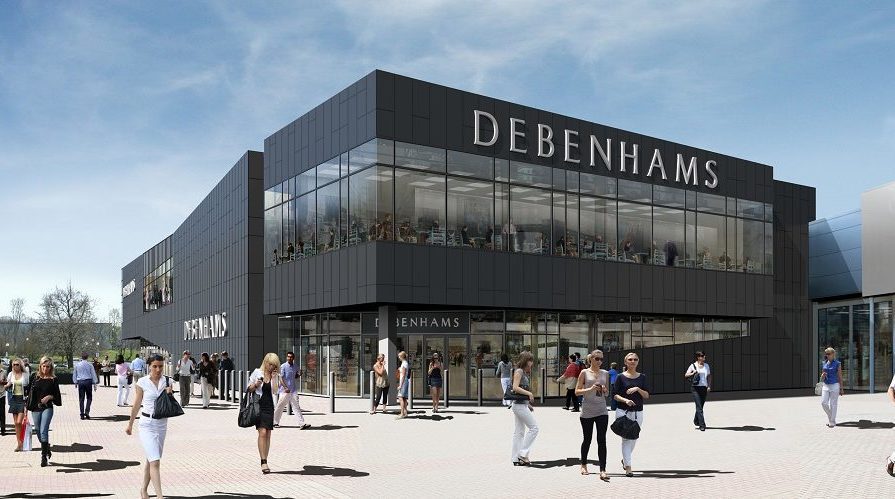Halting the demise of the ‘not my department’ store

Be it House of Fraser, retail bellwether John Lewis or in-the-wars Debenhams, department stores are in the news for all the wrong reasons – whether for profit warnings, sales dips or being sued by Sports Direct. The pace of change in the retail industry is ever accelerating, and department stores are struggling to carve out a place in the new world order.
Why? So far, the online world does what they do better. Amazon is not a place of personality and retail theatre but it is brilliant at being dependable and with a wider selection of products – arguably the key use-case for a department store. Online also opens up the direct relationship between brand and consumer, alleviating the need for brands to showcase their wares in high street stores.
From the perspective of these brands, you could argue that marketplaces like Alibaba and Amazon do a poor job of merchandising their products (a 24-carat diamond is listed in exactly the same manner as a pack of highlighters), yet still they sell.
So, is that it for the humble department store? Consigned to history in the same way as the gloves for driving that they used to stock in those quaint wooden drawers behind the counter? Or should that nostalgia trip be giving us a hint as to a way out, a chink of light in an otherwise bleak future?
If we consider what distinguishes a department store (historically) from Amazon, the key element is in personal service. From the dapper gent with the pocket square to the discreet ladies of the lingerie department, a certain kind of personal touch and great customer service has always been what sets the department store apart. With careful reintroduction, it could be so again.
This is more complicated than it sounds: today’s definition of customer service is not the customer service of yesteryear. Technological advances have brought with them changes in consumers’ expectations and behaviours, so retailers need to be thoughtful about how to reintroduce ‘superior customer service’, reframing it for a digital world. Many consumers are more than happy to use online or mobile devices as their information source pre, post or during their visit to the store.
This desire to get in and out without contact – or at least to have the choice – is becoming more common. In recognition of this, a Sephora store in New Zealand makes two shopping basket colours available – black or red. Black means ‘yes please, some help would be great, thank you very much’. Red means ‘leave well alone’.
Department stores must therefore rediscover what superior service means in the context of their brand and purpose, as well as how it is defined by customers within a specific market or cultural context. By doing so, a retailer can find the right balance between a frictionless experience and the appropriate level and delivery of in-person customer service. Today, it’s an omnichannel approach that embraces how consumers actually behave: they browse in-store for other products, they expect instant and easy answers to their questions and personalised experiences that take into account what they might want from a shopping adventure.
That might mean building on the success of personal shoppers in-store: at John Lewis Westfield, six personal shoppers now generate 20% of the store’s womenswear sales and the retailer is rolling the service out across its menswear departments. It may mean creating experiential areas where customers can immerse themselves in the real world version of a brand’s vision.
Perhaps it means on-site repair shops now that sustainability is a key issue on the minds of consumers. Or it’s just good, old-fashioned retail theatre like the Galeries Lafayette Christmas Tree in Paris (23m high in 1976).
Understanding the best area of focus for any brand comes down to using data and insights on customer behaviour to provide customers with relevant in-store and online experiences that are deemed useful and which properly represent the brand’s vision and purpose. While retailers are aware that data is a critical enabler for successful performance, they currently struggle to leverage it. Department stores such as Debenhams need to ensure they have in place a clear brand purpose, coupled with a sound analytics strategy that has senior buy-in (enabling data-driven decisions rather than ‘gut feel’ or HiPO (highest paid opinion)).
The future for department stores does not need to be bleak: with a serious focus on digital reinvigoration and data-driven insight and decision-making processes, they can rediscover that point of difference that made them stand head and shoulders above the other stores on the high street – the je ne sais quoi that didn’t just make them a useful stopping off point for Christmas shopping but an absolute destination shopping target. Otherwise, they will find themselves consigned to history with the driving gloves: a misty-eyed memory rather than a modern reality.
Guy Elliott, retail lead, Publicis Sapient







